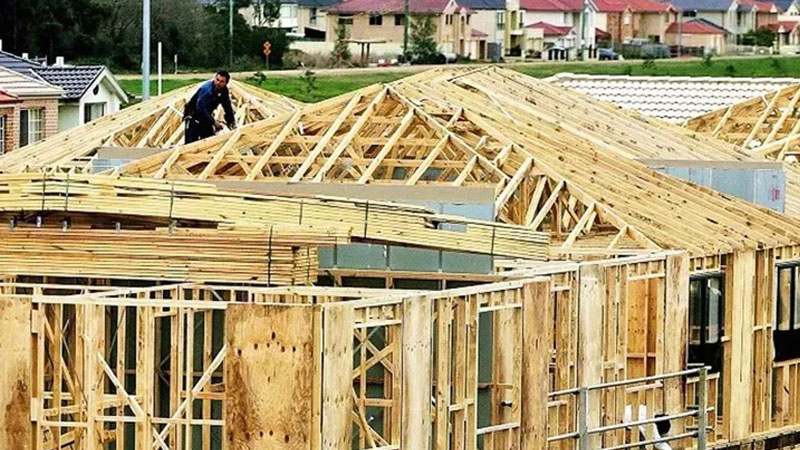Home Building Packs a Punch in Job Creation Stakes
The residential construction sector punches well above its weight as an economic multiplier—generating an average three jobs for every new home built.
The figures make it the second-largest economic multiplier of any industry, according to a report on residential construction by the National Housing Finance and Investment Corporation’s new research unit.
“Understanding how residential construction activity may affect jobs and flow through to the broader economy is increasingly important and timely, given the impact of Covid-19,” NHFIC chief executive Nathan Dal Bon said.
The coronavirus triggered further declines in housing construction (starts and approvals were already at record lows pre-Covid-19), prompting an onslaught of lobbying from industry groups, peak bodies and unions as the sector faced significant job losses.
Falling sales pushed project cancellations to more than four times the typical rate, while housing starts were predicted to more than halve from 2019 numbers.
In response, the federal government unveiled the “tradie-led” home builder stimulus in early June, while state and territory governments moved to expedite approvals processes.
Related: Social Housing to Lead Covid-19 Recovery

The report’s economic multiplier metric, favoured by policymakers to estimate the effect of industry on the broader economy, estimates that for every $1 million spent in residential building, nine jobs are created and $2.9 million is generated.
The impact of dwindling dwelling investment and population growth on the residential construction sector was a concern for RBA economists, too, recent emails released under a freedom of information request reveal.
“Because of lags in dwelling investment, these demand shocks have fairly long-lasting effects,” RBA economist Richard Evans said.
Evans said that the construction sector could lose around 20 per cent of its labour force.
“I assume two-thirds of this effect in the June quarter and one-third in the September quarter,” Evans wrote in mid-March.
The RBA flagged the deterioration of financing as a key downside risk to construction activity: “housing contacts have expressed concerns that banks may restrict finance to borrowers who have lost their jobs, [which] could lead to an increase in settlement failures”.
“The trough in construction activity is now expected to occur in early 2021 in the baseline scenario, two quarters later than previously expected.”














